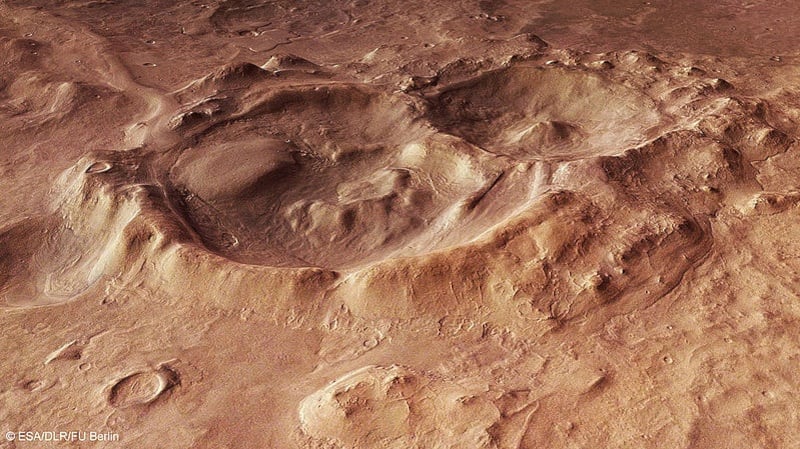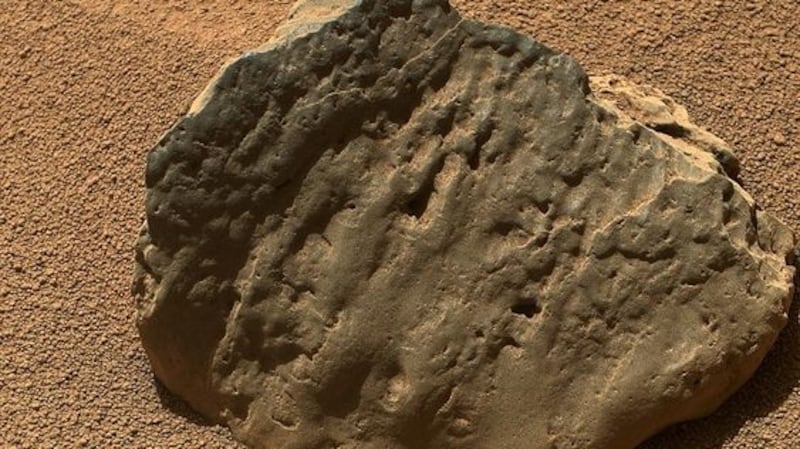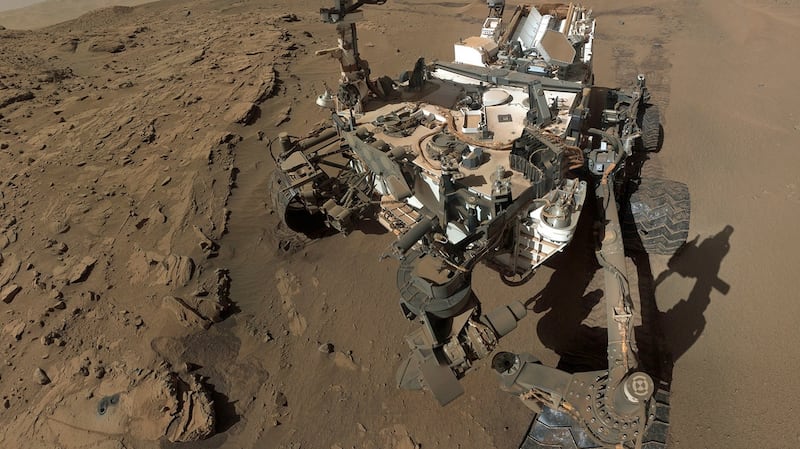Mars and Earth share various common traits. Both are terrestrial planets that formed in similar ways. The composition of each is comparable too, up to a point. "The biggest difference is the ratio of iron oxides to aluminium oxides in the soil or regolith," says Mark Cusimano, co-founder of US start-up The Martian Garden, which sells Mars Regolith Simulant to an ever growing market (The term "regolith" is used to describe any loose, eroded material on the surface of a planetary body.)
“On Mars there is more iron than aluminium in the regolith, while on Earth the opposite is the case.”
The abundance of iron oxide – essentially rust – is what gives Mars its trademark red tinge. The rocks on the planet’s surface are principally made up of igneous varieties – similar to basalt – and sedimentary rocks composed of eroded igneous material.
No need to thank The Irish Times for the science lesson. The real dirt here relates not only to the discovery of a regolith here on Earth with a similar composition to Mars, but the fact that it's already a commodity being sold to a growing number of consumers.

It’s not like a new gold rush. There isn’t huge demand for something as niche as space dirt. Still it may one day come in handy to know that the key to finding a good match to Mars is finding iron-rich sources of basalt here on Earth.
“Mars Material Simulant (MMS-1) is a mixture of iron-rich igneous rock, gravel, sand and dust,” he says. “It’s a close chemical match to the surface of Mars, and really stands apart from other regolith because it is near-perfect in terms of the size, shape, and density of the grains.
NASA’s Simulant
NASA and the JPL (Jet Propulsion Laboratory) have developed several types of Mars regolith simulant used to recreate the conditions for every Mars surface mission since Pathfinder as realistically as possible. It's also used extensively for research into plant growth in Mars-like conditions to help develop the knowledge we will ultimately need for colonisation. "Our goal was to bring these big budget research projects down to a scale that schools and hobbyists could afford, and we decided the best way to do that was a small garden kit," says Cusimano.
In 2006, scientists at NASA JPL were still developing the Mars Phoenix Polar Lander. They had been using a stimulant known as JSC-Mars 1 to test the ability of the probe to find water ice in the polar regions of Mars. “They found that JSC-1 did not provide a good hygroscopic match to the surface of Mars – simply put, it absorbed water too quickly and formed a clay.” To more closely simulate the surface of Mars, NASA developed Mojave Mars Simulant (MMS). In 2008, their research was published and in 2016, while researching alternatives to JSC-1, Cusimano and Co stumbled upon MMS.

“As we began developing our initial kit, we found that the available simulant – JSC-Mars 1 – was prohibitively expensive, and didn’t have that Mars Red look or feel. Even worse, most samples had other compounds that tainted the quality. We saw this high cost as a major obstacle not only to us, but to hobbyists, educators, and researchers working with tighter budgets. A different simulant, Mars Material Simulant (MMS-1), had also been developed but was not available for sale. Working with available NASA research, we discovered the best source for the material and were able to secure a major supply at a much lower cost and higher quality than JSC-Mars 1.”
Some investigative skills were required at this point to find the quarry where the JPL source was initially obtained, to establish whether or not they could develop their own unique supply line.
The detective work paid off, leading them to a small, remote portion of desert in Kern County, California. “When you’re out there, it really feels like you’re on Mars,” he says. “The eroded basalt has turned everything red, and combined with the lack of plants, it’s a very alien place.”

So far, educators have proven to be their biggest market, using MMS for many things, including plant growth science experiments, many of whom, says Cusimano, were inspired by the novel and subsequent film, The Martian, starring Matt Damon. "Some are using large quantities to create small Martian environments for rover models while others use it for chemical analysis."
More specialised researchers make up the remainder of this unique market. “These are mainly university and government-funded programmes that are directly using MMS to develop the knowledge humanity needs to explore and colonize Mars,” he says. “Hobbyists are also using MMS for a huge variety of projects, from gardening to model making to film props.”
High-End Dirt
The cost of the simulant varies in price from $5 (€4.50) to $30 (€27) per pound, based on grade, quantity, and type.
Tired of using the same old Mars Regolith Simulant? Well then maybe it’s time you switched to Martian Garden’s signature House Blend, MMS-2 – a 90 per cent chemical match to the surface of Mars. “As far as we know it’s the closest regolith match to Mars that’s ever been made publicly available,” says Cusimano.
The company has already sold MMS to customers in over two dozen countries, including Ireland, Germany, Italy, and the Netherlands.
"Ireland already has a strong space research base, with impressive work coming out of centres like the Tyndall National Institute in Cork, as well as from the Irish commercial space sector. We hope that MMS can catalyse and inspire more companies and educators to join this global venture."
Panel: Life Beyond Mars – The Goldilocks Zone
Growing efforts to colonise Mars are in part due to mankind’s long-standing obsession with the Red Planet but also for more practical reasons: it is only 54.6 million kilometres away.
However, since NASA’s Kepler Telescope was launched back in 2009, it has recorded the presence of numerous exoplanets, outside our solar system, with many of the key ingredients needed to support life.
In June 2017, the US Space Agency revealed it had discovered another 219 planets,10 of which were thought to be the correct temperature and size to support life. This most recent identification by NASA of suspected exoplanets puts the number discovered by the Kepler telescope alone to more than 4,000, 50 of which are believed to be of similar size and temperature as Earth. The other key element indicating the existence of life on exoplanets is whether they are situated in the Goldilocks Zone. This refers to when the distance between a planet and its star are neither too hot nor too cold to support complex life.










